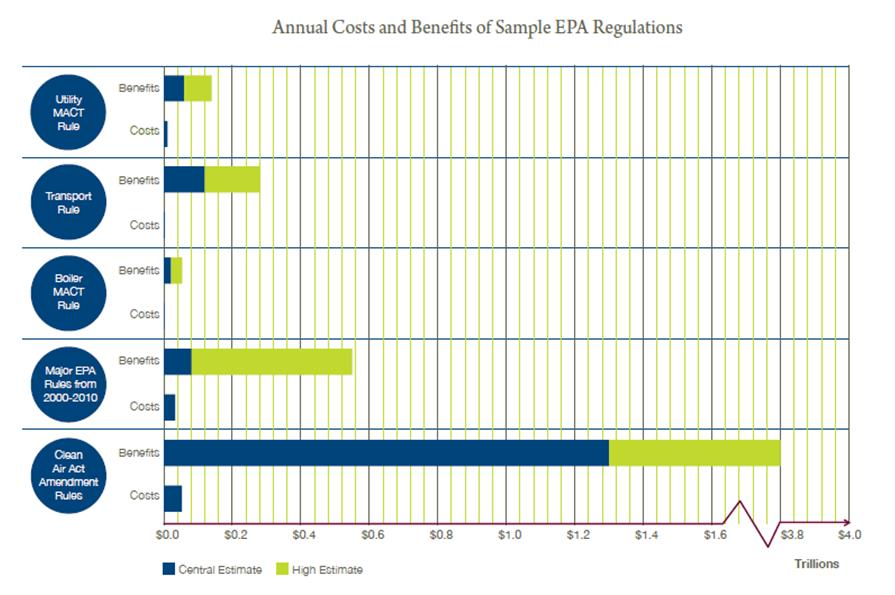The EPA has published a federal register notice to solicit public comments on their ozone designation recommendations to the states. This comment period closes on January 19th and we have included the notice for information on where and how to submit your comments.
Public Citizen and Sierra Club believe the inclusion of Freestone, Limestone, McClennan, Navarro and Wise Counties in the designation of the new Dallas-Fort Worth (DFW) ozone nonattaiment area for the 2008 Ozone National Ambient Air Quality Standard (NAAQS) will be essential to this area being able to effectively develop an implementation plan that will move the area out of nonattainment for federal air quality standards. We would encourage those in these counties and in the DFW area to submit comments to this effect.
FEDERAL REGISTER NOTICE OF ENVIRONMENTAL PROTECTION AGENCY PUBLIC COMMENT PERIOD – SUMMARY: Notice is hereby given that the EPA has posted its responses to state and tribal designation recommendations for the 2008 Ozone National Ambient Air Quality Standards (NAAQS) on the Agency’s Internet Web site. The EPA invites public comments on its responses during the comment period specified in the DATES section. The EPA sent responses directly to the states and tribes on or about December 9, 2011, and intends to make final designation determinations for the 2008 Ozone NAAQS in spring 2012.
DATES: Comments must be received on or before January 19, 2012. Please refer to SUPPLEMENTARY INFORMATION for additional information on the comment period.
ADDRESSES: Submit your comments, identified by Docket ID No. EPA-OAR- HQ-2008-0476, by one of the following methods: http://www.regulations.gov. Follow the online instructions for submitting comments:
- Email: a-and-r-docket@epa.gov. Attention Docket ID No. EPA-HQ-OAR-2008-0476.
- Fax: (202) 566-9744. Attention Docket ID No. EPA-HQ-OAR- 2008-0476.
- Mail: Air Docket, Attention Docket ID No. EPA-HQ-OAR-2008- 0476, Environmental Protection Agency, Mail Code: 6102T, 1200 Pennsylvania Ave. NW., Washington, DC 20460.
- Hand Delivery: EPA Docket Center, 1301 Constitution Avenue NW., Room 3334, Washington, DC.
(Such deliveries are only accepted during the Docket’s normal hours of operation, and special arrangements should be made for deliveries of boxed information.
Instructions: Direct your comments to Docket ID No. EPA-HQ-OAR- 2008-0476. The EPA’s policy is that all comments received will be included in the public docket without change and may be made available online at www.regulations.gov, including any personal information provided, unless the comment includes information claimed to be confidential business information or other information whose disclosure is restricted by statute. Do not submit information that you consider to be confidential business information or otherwise protected through www.regulations.gov or email. The www.regulations.gov web site is an “anonymous access” system, which means the EPA will not know your identity or contact information unless you provide it in the body of your comment. If you send an email comment directly to the EPA without going through www.regulations.gov, your email address will be automatically captured and included as part of the comment that is placed in the public docket and made available on the Internet. If you submit an electronic comment, the EPA recommends that you include your name and other contact information in the body of your comment and with any disk or CD-ROM you submit. If the EPA is unable to read your comment and cannot contact you for clarification due to technical difficulties, the EPA may not be able to consider your comment. Electronic files should avoid the use of special characters, any form of encryption, and be free of any defects or viruses. For additional information about the EPA’s public docket, visit the EPA Docket Center homepage at http://www.epa.gov/epahome/dockets.htm. For additional instructions on submitting comments, go to Section II of the SUPPLEMENTARY INFORMATION section of this document. Docket: All documents in the docket are listed in the www.regulations.gov index. Although listed in the index, some information is not publicly available, i.e., confidential business information or other information whose disclosure is restricted by statute. Certain other material, such as copyrighted material, is not placed on the Internet and will be publicly available only in hard copy form. Publicly available docket materials are available either electronically in www.regulations.gov or in hard copy at the EPA Docket Center, EPA West, Room 3334, 1301 Constitution Avenue NW., Washington, DC. The Public Reading Room is open from 8:30 a.m. to 4:30 p.m., Monday through Friday, excluding legal holidays. The telephone number for the Public Reading Room is (202) 566-1744, and the telephone number for the Air Docket is (202) 566-1742.
FOR FURTHER INFORMATION CONTACT: For general questions concerning this action, please contact Carla Oldham, U.S. EPA, Office of Air Quality Planning and Standards, Air Quality Planning Division, C539-04, Research Triangle Park, NC 27711, telephone (919) 541-3347, email at oldham.carla@epa.gov. For questions about areas in the EPA Region 1, please contact Richard Burkhart, U.S. EPA, telephone (617) 918-1664, email at burkhart.richard@epa.gov. For questions about areas in the EPA Region 2, please contact Bob Kelly, U.S. EPA, telephone (212) 637-3709, email at kelly.bob@email.gov. For questions about areas in the EPA Region 3, please contact Maria Pino, U.S. EPA, telephone (215) 814- 2181, email at pino.maria@epa.gov. For questions about areas in the EPA Region 4, please contact Jane Spann, U.S. EPA, telephone (404) 562- 9029, email at spann.jane@epa.gov. For questions about areas in the EPA Region 5, please contact Edward Doty, U.S. EPA, telephone (312) 886- 6057, email at doty.edward@epa.gov. For questions about areas in the EPA Region 6, please contact Guy Donaldson, U.S. EPA, telephone (214) 665-7242, email at donaldson.guy@epa.gov. For questions about areas in the EPA Region 7, please contact Lachala Kemp, U.S. EPA, telephone (913) 551-7214, email at kemp.lachala@epa.gov. For questions about areas in the EPA Region 8, please contact Scott Jackson, U.S. EPA, telephone (303) 312-6107, email at jackson.scott@epa.gov. For questions about areas in the EPA Region 9, please contact John J. Kelly, U.S. EPA, telephone (415) 947-4151, email at kelly.johnj@epa.gov. For questions about areas in EPA Region 10, please contact Claudia Vaupel, U.S. EPA, telephone (206) 553-6121, email at vaupel.claudia@epa.gov.
SUPPLEMENTARY INFORMATION:
I. Background and Purpose
On March 12, 2008, the EPA revised the NAAQS for ozone to provide increased protection of public health and welfare from ozone pollution (73 FR 16436; March 27, 2008). The process for designating areas following promulgation of a new or revised NAAQS is contained in Clean Air Act (CAA) section 107(d) (42 U.S.C. 7407). Following the promulgation of a new or revised standard, each governor or tribal leader has an opportunity to recommend air quality designations, including the appropriate boundaries for nonattainment areas, to the EPA. The EPA considers these recommendations as part of its duty to promulgate the formal area designations and boundaries for the new or revised standards. By no later than 120 days prior to promulgating designations, the EPA is required to notify states and tribes of any intended modification to an area designation or boundary recommendation that the EPA deems necessary. On or around December 9, 2011, the EPA notified states and tribes of its intended area designations for the 2008 Ozone NAAQS. States and tribes now have an opportunity to demonstrate why they believe an intended modification by the EPA may be inappropriate. The EPA encouraged states and tribes to provide comments and additional information for consideration by the EPA in finalizing designations. The EPA plans to make final designation decisions for the 2008 Ozone NAAQS in spring 2012. The purpose of this notice is to solicit public comments from interested parties other than states and tribes on the EPA’s recent responses to the state and tribal designation recommendations for the 2008 Ozone NAAQS. These responses can be found on the EPA’s Internet Web site at http://www.epa.gov/ozonedesignations and also in the public docket for ozone designations at Docket ID No. EPA-HQ-OAR-2008-0476. The CAA section 107(d) provides a process for designations that involves recommendations by states and tribes to the EPA and responses from the EPA to those parties, prior to the EPA promulgating final designations and boundaries. The EPA is not required under the CAA section 107(d) to seek public comment during the designation process, but is electing to do so for the 2008 Ozone NAAQS in order to gather additional information for the EPA to consider before making final designations. The EPA invites public comment on its responses to states and tribes during the 30-day comment period provided by this notice. Due to the statutory timeframe for promulgating designations set out in the CAA section 107(d), the EPA will not be able to consider any public comments submitted after January 19, 2012. This notice and opportunity for public comment does not affect any rights or obligations of any state, tribe or the EPA which might otherwise exist pursuant to the CAA section 107(d). Please refer to the ADDRESSES section above in this document for specific instructions on submitting comments and locating relevant public documents. In establishing nonattainment area boundaries, the EPA is required to identify the area that does not meet the 2008 Ozone NAAQS and any nearby area that is contributing to the area that does not meet that standard. We are particularly interested in receiving comments, supported by relevant information, if you believe that a specific geographic area that the EPA is proposing to identify as a nonattainment area should not be categorized by the CAA section 107(d) criteria as nonattainment, or if you believe that a specific area not proposed by the EPA to be identified as a nonattainment area should in fact be categorized as nonattainment using the CAA section 107(d) criteria. Please be as specific as possible in supporting your views. Describe any assumptions and provide any technical information and/or data that you used. Provide specific examples to illustrate your concerns, and suggest alternatives. Explain your views as clearly as possible. Make sure to submit your comments by the comment period deadline identified in the DATES section above.
II. Instructions for Submitting Public Comments
What should I consider as I prepare my comments for the EPA?
1. Submitting Confidential Business Information. Do not submit this information to the EPA through www.regulations.gov or email. Clearly mark the part or all of the information that you claim to be confidential business information. For confidential business information in a disk or CD-ROM that you mail to the EPA, mark the outside of the disk or CD-ROM as confidential business information and then identify electronically within the disk or CD-ROM the specific information that is claimed as confidential business information. In addition to one complete version of the comment that includes information claimed as confidential business information, a copy of the comment that does not contain the information claimed as confidential business information must be submitted for inclusion in the public docket. Information so marked will not be disclosed except in accordance with procedures set forth in 40 CFR part 2. Send or deliver information identified as confidential business information only to the following address: Roberto Morales, U.S. EPA, Office of Air Quality Planning and Standards, Mail Code C404-02, Research Triangle Park, NC 27711, telephone (919) 541-0880, email at morales.roberto@epa.gov, Attention Docket ID No. EPA-HQ-OAR-2008-0476. 2. Tips for Preparing Your Comments. When submitting comments, remember to: Identify the rulemaking by docket number and other identifying information (subject heading, Federal Register date and page number). Follow directions–The agency may ask you to respond to specific questions or organize comments by referencing a Code of Federal Regulations (CFR) part or section number. Explain why you agree or disagree; suggest alternatives and substitute language for your requested changes. Describe any assumptions and provide any technical information and/or data that you used. If you estimate potential costs or burdens, explain how you arrived at your estimate in sufficient detail to allow for it to be reproduced. Provide specific examples to illustrate your concerns, and suggest alternatives. Explain your views as clearly as possible, avoiding the use of profanity or personal threats. Make sure to submit your comments by the comment period deadline identified.
III. Internet Web Site for Rulemaking Information
The EPA has also established a Web site for this rulemaking at www.epa.gov/ozonedesignations. The Web site includes the state and tribal designation recommendations, information supporting the EPA’s preliminary designation decisions, as well as the rulemaking actions and other related information that the public may find useful.
Read Full Post »

 Date: Thursday, 11/17/2016
Date: Thursday, 11/17/2016






